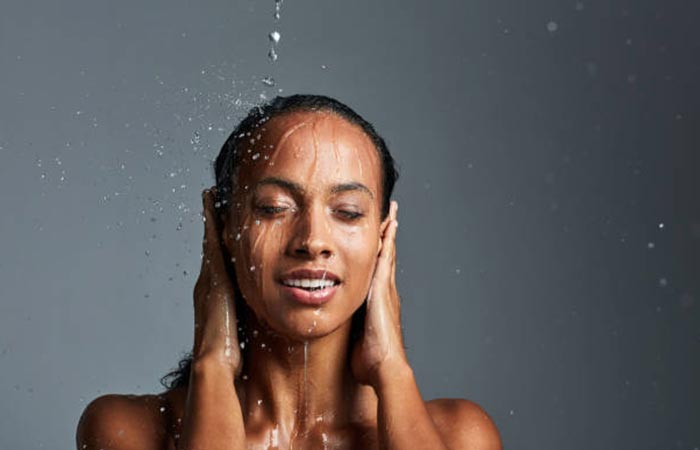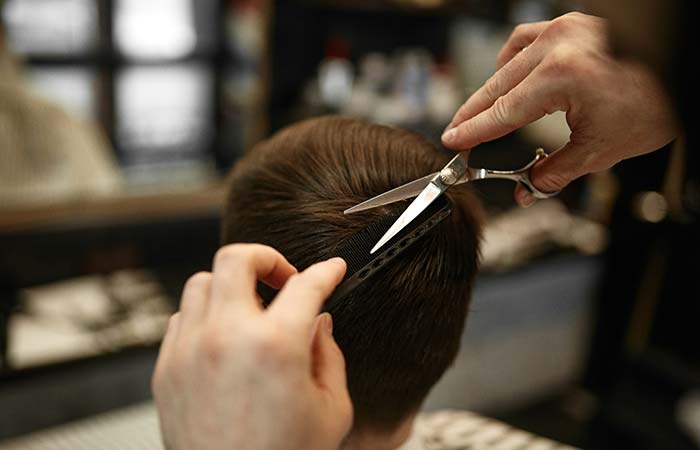Hair Care Guide for Swimmers: 15 Tips to Protect Your Hair from Chlorine Damage
Have you noticed your hair looks a bit more dry and damaged since you started swimming regularly? That straw-like texture and lackluster appearance are likely due to chlorine exposure. Chlorine can do real damage to your hair, stripping away moisture and weakening strands.
But don’t hang up your goggles just yet! With the proper hair care routine, you can protect your strands and maintain healthy, vibrant hair even with regular pool time.
This guide will walk you through the effects of chlorine, smart pre-swim preparations, post-swim hair care, tips for reducing chemical damage, and products to repair chlorine-exposed hair so you can continue to enjoy the water without sacrificing your locks!
How Chlorine Affects Your Hair
To understand how to properly care for your hair after swimming, it is a good idea to know exactly how and why pool chemicals cause damage. While it is effective in disinfecting the pool, chlorine is bad for your hair in the following ways.
Stripping Natural Oils
One of the main ways chlorine damages hair is by stripping away the natural oils, or sebum, that protect your hair and scalp. Sebum offers a layer of protection against environmental damage. When chlorine strips that oil away, hair is left unguarded and prone to dryness.
Without those natural oils, your hair cuticle (the outermost protective layer) becomes damaged. This leads to a roughened texture, tangled strands, and increased breakage risk.
Color Changes
Many swimmers are all too familiar with chlorine’s effect on hair color. Blondes may notice their hair takes on a greenish tint over time. This is because copper found in pipes plus chlorine interact to alter lighter shades.

For those with color-treated hair, frequent swimming can cause your salon dye job to fade quickly. The chlorine molecules react with the artificial pigments to dull and wash out your pricey highlights.
Weakening Hair
In addition to stripping your hair’s protective oils, chlorine further weakens your strands by creating gaps in the hair cuticle. This damage allows moisture to leak out while also letting in pollutants.
The more holes in your hair cuticle, the more prone your hair becomes to tangling, matting, and breakage. Over time, weakened hair from chronic chlorine exposure can even lead to hair loss.
Impact on Treated Hair
Those with color-treated hair, perms, or other chemical processing face the most risk for severe chlorine damage. Hair relaxers, dyes, and bleaches all strip away some of the natural protective lipids in your hair shaft.
With less sebum to start with, treated hair has fewer defenses against the drying effect of pool chemicals. Chlorine can interact with color molecules and cause rapid fading. It also penetrates the already compromised cuticle, worsening existing damage.
Now that you know how chlorine wreaks havoc on your hair, let’s go over how you can minimize the damage and keep your hair healthy and vibrant.
Further Reading: The Disadvantages of Swimming that you should be aware of
Pre-Swim Tips to Protect Your Hair
Caring for your hair starts before you even get wet. Using the right products and techniques prior to swimming can create a barrier that keeps harsh chemicals at bay.
Wet Hair with Fresh Water First
Before you dive into the chlorinated pool, make sure to soak your hair thoroughly under regular tap water or a shower. Wetting your hair with non-chlorinated water first provides protection from chlorine absorption.
Think of your dry hair like a sponge – it will eagerly soak up any liquid it comes into contact with. If you pre-soak your hair, it won’t absorb nearly as much of the damaging pool water. The chlorine molecules will have a harder time penetrating the hair shaft.

This quick pre-swim rinse only takes a minute but makes a big difference in minimizing chemical exposure to your locks. For maximum results, aim to wet your hair as close to swim time as possible.
Apply a Natural Oil
Another great chlorine protectant is coating your hair with a natural oil before swimming. Oils like coconut oil and olive oil provide a protective barrier that chlorine cannot penetrate.
These oils are water-resistant and repel chlorine molecules rather than allowing them to be absorbed into your hair. Olive oil contains antioxidants like vitamin E that help protect and preserve your hair protein when it comes into contact with chemicals.
Coconut oil offers intense hydration thanks to its nutritious fatty acids content. Massage a bit of melted coconut oil thoroughly into your hair before hitting the pool. The oil will lock in moisture and guard your strands during your swim session.
Use Leave-In Conditioners
Look for hydrating leave-in conditioners designed for swimmers to provide another layer of defense for your hair. Many contain silicones that help seal the hair cuticle to prevent chlorine absorption.
Applying a leave-in conditioner to your hair after your initial fresh water rinse provides maximum protection. The conditioner smooths and coats the hair shaft while adding softness and slip to prevent tangles.
There are even specially formulated pre-swim conditioners that offer added UV filtration to protect your hair from sun exposure in outdoor pools.
Secure Hair Under a Swim Cap
The best way to limit chlorine exposure is to keep your hair completely dry while swimming. The most effective method is wearing a swim cap, which covers your entire head and keeps your hair protected.

Although not 100% impermeable to water, a swim cap significantly reduces the amount of chlorine and pool chemicals your hair comes into contact with during laps. Choose a tight-fitting silicone cap for the most coverage.
Wear your swim cap properly by securing all your hair inside. For long hair, it may be easier to put your cap on while your hair is still dry to achieve full coverage.
Style in a Protective Updo
If you don’t want to wear a swim cap but still want to minimize water contact, style your hair in a braid or twisted updo like a bun or French twist. Securing your hair up and away from your shoulders reduces the surface area exposed to chemicals.
Focus on keeping the roots protected, as this is where chlorine penetration causes the most damage. If your hair is too short for an updo, use waterproof hair clips or a headband to keep hair pulled back off your face and neck.
Post-Swim Routines for Healthy Hair
Caring for your hair quickly after exiting the pool is crucial for preventing or minimizing chlorine damage. Start with these tips immediately after swim practice:

Rinse With Fresh Water
As soon as you can after your swim session, rinse your hair under regular tap water or hop in the shower. Thoroughly rinse your hair to remove any lingering pool water and chemicals on the surface.
Aim for at least five minutes of rinsing to fully clear your hair of chlorine, maximizing the time before it has a chance to penetrate the cuticle. This quick post-rinse won’t completely remove chlorine but helps stop the chemical process.
Wash With a Clarifying Shampoo
The next time you shampoo after swimming, use a clarifying shampoo made for swimmers that is stronger than your regular formula. These shampoos are specifically designed to remove chlorine and minerals that build up on your scalp and hair.
Clarifying shampoos contain surfactants that dissolve and wash away chemical residue while detoxifying your hair and unclogging your scalp. Just don’t use them more than 1-2 times per week, as they can strip natural oils over time.
Apply a Deep Conditioning Mask
Counteract the drying effects of pool chemicals by replenishing moisture with a hydrating hair mask or deep conditioning treatment after you shampoo. These masks infuse your hair with nutrients and oils to restore softness and shine.
Look for moisturizing ingredients like shea butter, coconut oil, jojoba oil, olive oil, and argan oil. Apply the mask from roots to tips and allow it to penetrate for 5-10 minutes under a shower cap before rinsing. Use a mask at least once a week after swimming.
Avoid Heat Styling Tools
It’s best to skip hot tools like blow dryers, straighteners, and curling irons until your hair has had time to air dry and recover from chlorine exposure. Heat styling can further dry out your hair and cause more damage to the weakened cuticle.
Let your hair air dry fully before deciding if you want to style it with heat. If you do use hot tools, make sure to apply a heat-protectant product first to prevent excessive damage to your already compromised hair.
Gently Comb Through Knots
When hair is wet, it is extremely fragile and prone to breakage. After swimming, gently work through tangles using a wide-tooth comb or your fingers rather than harshly pulling with a brush.
Start combing from the bottom inch of your hair slowly and carefully comb up to remove knots. Avoid yanking or ripping at your hair while wet. If needed, apply a detangling product to help slick strands and minimize breakage.
Fixing Chlorine Damaged Hair + Ongoing Care Tips
If your hair has already been severely damaged by chlorine, follow the tips below to help restore its health and vitality. These tips can also keep your hair healthy in between swims. Implementing this routine hydrates and repairs your overworked tresses:
Get Regular Trims
Schedule appointments for regular trims every 6-8 weeks to snip away any split ends and damage before it travels up the hair shaft. Removing ragged ends prevents further breaking and tangling.
Further Reading: Why Competitive Swimmers Shave?
Ask your stylist to assess your hair’s overall condition and recommend customized products and masks for repairing dryness, porosity, or breakage caused by frequent swimming. They can help get your hair back to prime health.

Deep Conditioning Treatments
Using an intensive deep conditioning hair mask at least once a week provides your hair with an extra dose of moisture and nourishment it craves after constant chemical exposure.
For best results, apply the mask after shampooing and leave it on for 10-15 minutes under a shower cap before rinsing out thoroughly. This gives the nourishing oils and butters time to penetrate the hair shaft.
Avoid Chemical Processing
If your hair is severely damaged from chronic swimming, hold off on any chemical processing for the time being. That includes dyeing, highlights, perms, relaxers, or other treatments that require the use of harsh chemicals on your already compromised hair.
These procedures strip your hair even more, leaving it further weakened and prone to breakage. Give your strands a chance to heal before subjecting them to more chemical trauma.
Seek Professional Help
In cases of significant chlorine damage, make an appointment with your stylist to evaluate your hair’s current condition. They can assess the severity of the dryness, porosity, breakage, and loss of elasticity caused by exposure to pool chemicals.
A professional can recommend the most effective conditioning and repairing hair products and treatments. For very damaged hair, a stylist may suggest cutting off several inches to remove split ends and improve your hair’s overall appearance and texture.
While it may take time to rehab chlorine-damaged hair back to prime condition, the effort is well worth it. With diligent pre- and post-swim care along with deep weekly conditioning, you’ll be stroking sleek, healthy hair in no time.
Further Reading:
- How to Fix Green Hair From Pool
- The Health Benefits of Swimming for Body and Mind
- Why Some People Including Celebrities Can’t Swim
FAQs
Here are commonly asked questions about, pool chemicals, swimming, and hair care
How do you Protect your Hair when Swimming every Day?
To protect hair when swimming every day, wet hair with fresh water first, coat strands with a natural oil or leave-in conditioner, secure hair in a tight swim cap, and rinse immediately after.
What Happens if you Leave Chlorine in your Hair?
Leaving chlorine in your hair can lead to dryness, damage, color fading, breakage, and tangling as the chemicals disrupt the hair cuticle and strip away protective oils.
Is Saltwater Bad for Your Hair?
Yes, saltwater can damage hair by leaving it dry, brittle, and prone to tangling due to the salt depleting moisture from the hair shaft.
How do I do Protect My Hair from Salty Sea Water?
To protect hair from saltwater, coat strands thoroughly with a thick conditioner or hair oil before swimming to create a barrier, then rinse out immediately after.
What are the Best Hair Protection Products for Swimming?
The best hair protection products for swimming include swim caps, leave-in conditioners, natural hair oils like coconut oil, pre-swim sprays, and moisturizing shampoos/conditioners.
What is the Best Hairstyle for Swimming?
The best hairstyles for swimming are braids, buns, or ponytails, as they keep hair securely tied up and minimize contact with chlorine.
Will Swimming Once a Week Damage my Hair?
Swimming once a week can still damage hair from chlorine exposure, so it’s important to take precautions like pre-soaking hair and using a cap or conditioner.
Can I go Swimming if I Dye my Hair?
Yes, you can swim after dyeing your hair but take extra precautions like oiling hair before swimming and using a cap to prevent fading.
How Often Should a Swimmer Wash their Hair?
Swimmers should aim to wash their hair only 2-3 times per week with a gentle, clarifying shampoo to remove chlorine but not over-dry hair.
Take Away
As a frequent swimmer, properly caring for your hair is essential to counteract the drying and damaging effects of chlorine exposure. But armed with the right tips and products, you can maintain soft, shiny strands despite daily dips in the pool.
Remember these key pointers for healthy swimmer’s hair:
- Soak your hair with regular water before swimming
- Coat your hair with natural oils or leave-in conditioner
- Cover your hair securely in a tight swimcap
- Rinse immediately after exiting the pool
- Wash less frequently with a clarifying, hydrating shampoo
- Apply weekly deep-conditioning hair masks
- Avoid heat styling and gently detangle when wet
- Get occasional trims and conditioning treatments
With diligence, you can have your time in the water while still flaunting fabulous, chlorine-free hair. Don’t let pool chemicals dry out your luscious locks. Use these tips to defend your strands and keep them healthy and vibrant all season long.





